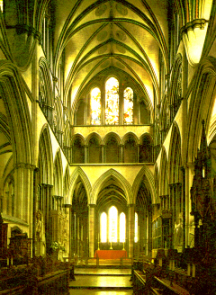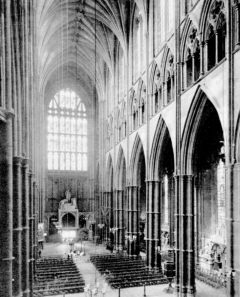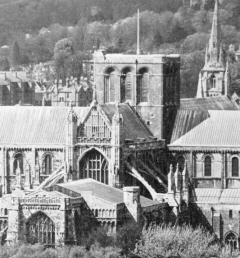

The first technical advance we will discuss is the pointed arch. This is the point at which the top of the columns meet, shown here above the window in the center of the photo. Having them meet at an angle rather than a curve added strength because of the more efficient way the wheight carried by the columns was distributed. Thus, fewer columns would be needed to support a building of the same size or larger.

The second technical advance of note was the vaults. These were the internal supports of the cathedral ceiling. Their purpose was to disperse across the ceiling the weight to be carried by the columns. Featured here are rib vaults. Rib vaults replaced single pointed vaults, increasing both the strength and beauty of the cathedral. Other vaulting styles were subsequently used, such as fan, net and triceron vaults, each based on this English invention.

The third technical advance of gothic architecture was the flying buttress. Flying buttress assisted in carrying the thrust of the vaults. This external feature is another example of a functional addition to cathedral design that was also embellished upon for the purpose of beauty. They can be seen in the center of this photo extending out from the transept at an angle.
The whole church structure became lighter, airier and taller with the advent of the Gothic period, stretching cathedrals to the heavens.


